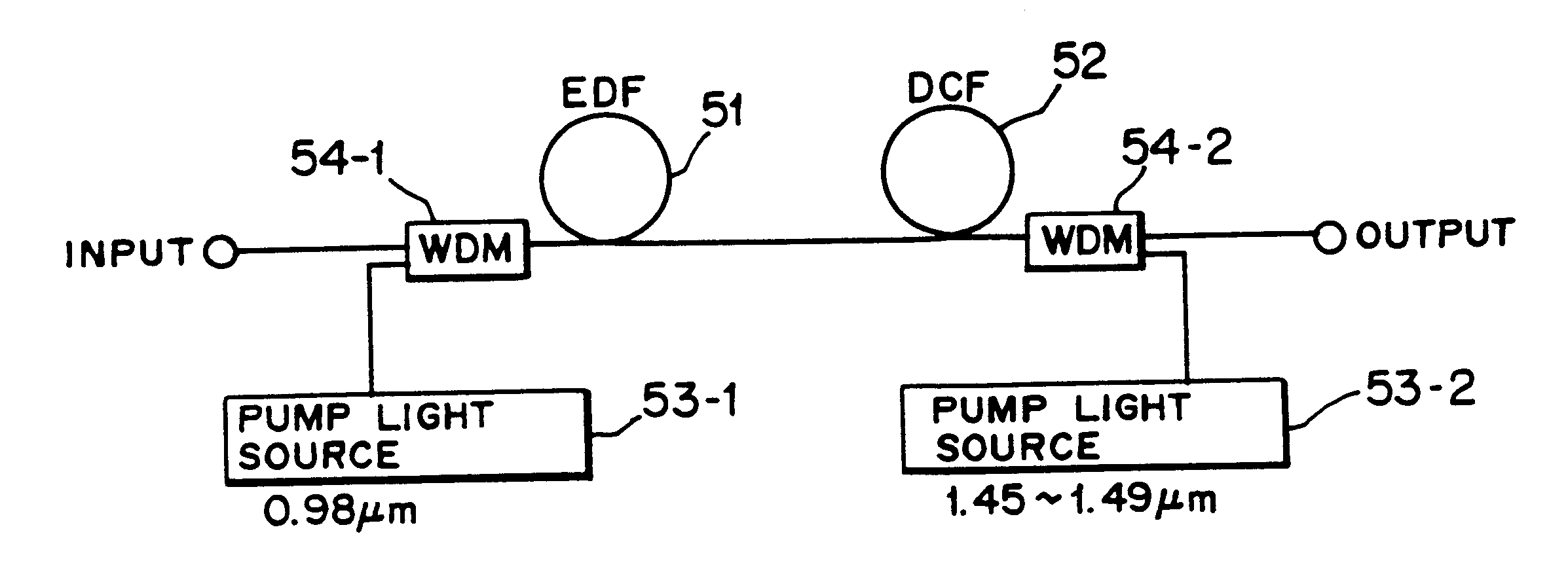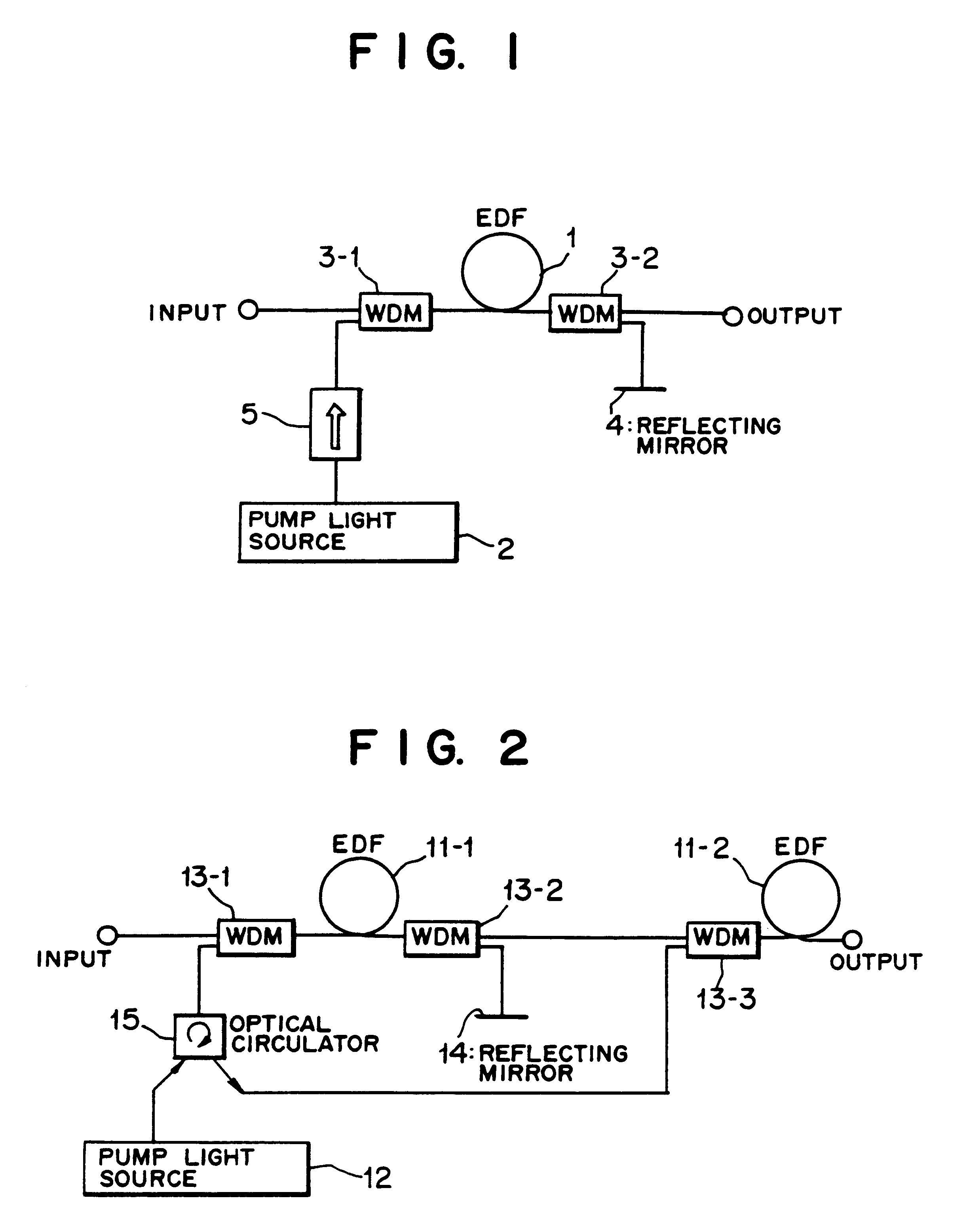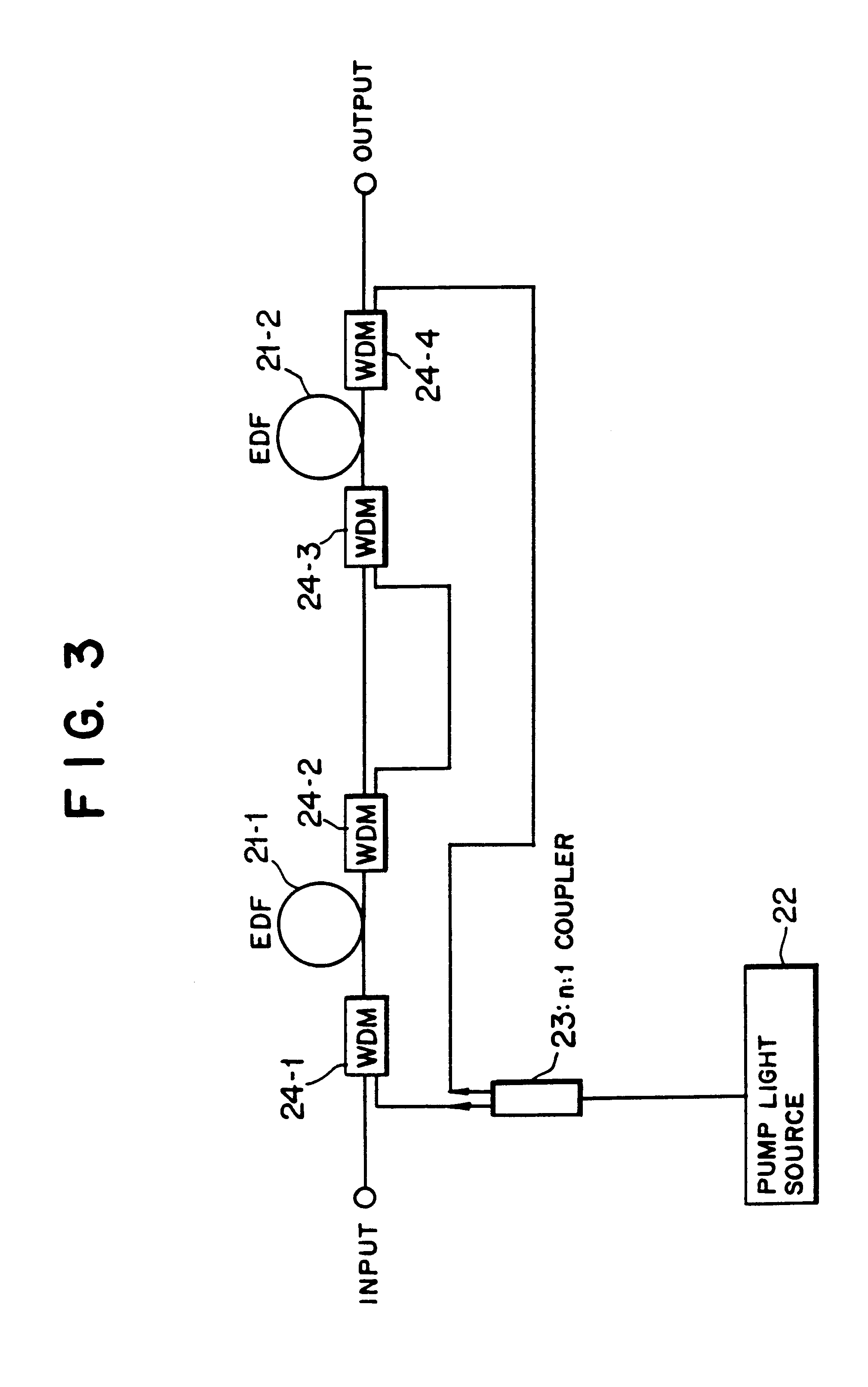Optical fiber amplifier and dispersion compensating fiber module for optical fiber amplifier
a technology of optical fiber amplifier and optical fiber amplifier, which is applied in the direction of multiplex communication, wavelength-division multiplex system, active medium material, etc., can solve the problems of accumulating dispersion amount, degrading conversion efficiency, and unstable operation of pump sour
- Summary
- Abstract
- Description
- Claims
- Application Information
AI Technical Summary
Benefits of technology
Problems solved by technology
Method used
Image
Examples
first embodiment
B1. First Embodiment
Referring now to FIG. 16, there is shown in block diagram an optical fiber amplifier according to a first preferred embodiment of the present invention. The optical fiber amplifier shown includes a pair of erbium-doped-fibers (EDF) 11-1 and 11-2 each as a rare earth doped fiber, a pair of pump sources 12-1 and 12-2, four optical demultiplexer-multiplexers (WDM; optical wave separator-combiners) 13-1 to 13-4 serving as first to fourth optical couplers, respectively, a reflecting mirror (reflection element) 14, an optical circulator 15, three isolators (ISO) 16-1 to 16-3, and an optical filter 17.
In particular, in the optical fiber amplifier, the isolator 16-1, optical demultiplexer-multiplexer 13-1, erbium-doped-fiber 11-1, optical demultiplexer-multiplexer 13-2, optical filter 17, isolator 16-2, optical demultiplexer-multiplexer 13-3, erbium-doped-fiber 11-2, optical demultiplexer-multiplexer 13-4 and isolator 16-3 are arranged in this order from the input side.
T...
second embodiment
B2. Second Embodiment
FIG. 23 is a block diagram showing a second preferred embodiment of the present invention. Referring to FIG. 23, the optical fiber amplifier shown includes an isolator 25-1, an optical demultiplexer-multiplexer (first coupler) 24-1, an erbium-doped-fiber (rare earth doped fiber) 21-1, another optical demultiplexer-multiplexer (second coupler) 24-2, an optical filter 26, another isolator 25-3, a further optical demultiplexer-multiplexer (third coupler) 24-3, another erbium-doped-fiber (rare earth doped fiber) 21-2, a still further optical demultiplexer-multiplexer (fourth coupler) 24-4 and a further isolator 25-4 disposed in this order from the input side.
An optical signal line including the optical filter 26 and the isolator 25-3 and a pump light line are provided in parallel between the optical demultiplexer-multiplexers 24-2 and 24-3.
A pump source 22 is connected to the optical demultiplexer-multiplexer 24-1 by way of an optical branching element 23 and a stil...
third embodiment
B3. Third Embodiment
FIG. 25 is a block diagram showing a third preferred embodiment of the present invention. Referring to FIG. 25, the optical fiber amplifier shown includes an isolator 5-1, an optical demultiplexer-multiplexer 3-1, an erbium-doped-fiber (rare earth doped fiber) 1, another optical demultiplexer-multiplexer 3-2, and another isolator 5-3 disposed in this order from the input side. A pump source 2 is connected to the optical demultiplexer-multiplexer 3-1 by way of a further isolator 5-2. A reflecting mirror (reflection element) 4 is connected to the optical demultiplexer-multiplexer 3-2.
In particular, the optical fiber amplifier shown in FIG. 25 includes a first element for introducing pump light into an input end of the erbium-doped-fiber 1 by means of the optical demultiplexer-multiplexer 3-1, and a second element for demultiplexing residual pump light originating from the pump light introduced into the input end of the erbium-doped-fiber 1 by the first element and ...
PUM
 Login to View More
Login to View More Abstract
Description
Claims
Application Information
 Login to View More
Login to View More - R&D
- Intellectual Property
- Life Sciences
- Materials
- Tech Scout
- Unparalleled Data Quality
- Higher Quality Content
- 60% Fewer Hallucinations
Browse by: Latest US Patents, China's latest patents, Technical Efficacy Thesaurus, Application Domain, Technology Topic, Popular Technical Reports.
© 2025 PatSnap. All rights reserved.Legal|Privacy policy|Modern Slavery Act Transparency Statement|Sitemap|About US| Contact US: help@patsnap.com



